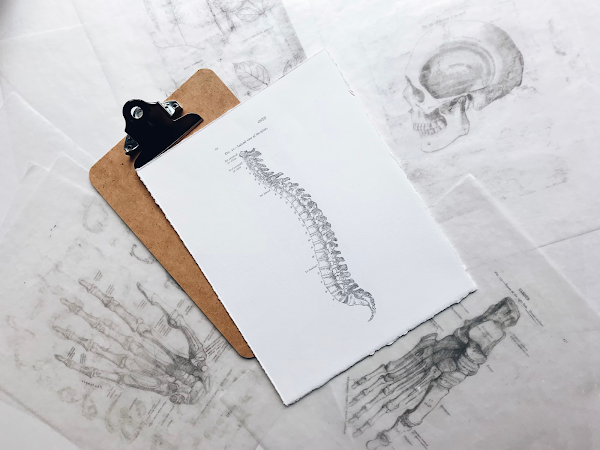The Most Common Back Problems And How To Treat Them
Our backs, the pillars of our body, support us in almost every physical activity we engage in. From sitting at a desk for long hours to lifting heavy objects, our backs play a crucial role in our daily lives. Unfortunately, this vital part of our anatomy is prone to various problems that can cause discomfort, pain, and even long-term disability if left untreated. In this comprehensive guide, we will explore the most common back problems people encounter and delve into effective ways to treat them, promoting a healthier and more pain-free life.
Understanding the Basics of Back Pain
Back pain is a widespread issue that can stem from various factors, including muscle strain, ligament sprain, herniated discs, and even poor posture. It can manifest as acute pain or develop into chronic conditions, impacting daily activities and diminishing overall quality of life. It is crucial to identify the root cause of back pain to implement targeted treatment strategies and prevent recurrence. Consulting with a healthcare professional is the first step toward understanding the specific nature of your back pain and finding an appropriate solution.
The Silent Culprit - Poor Posture
One of the leading causes of back problems in the modern world is poor posture. As our lives become increasingly sedentary, with hours spent hunched over desks or slouched on sofas, our backs bear the brunt of these habits. Poor posture can lead to misalignment of the spine, muscle imbalances, and increased pressure on vertebral discs. Simple lifestyle changes, such as maintaining an ergonomic workspace, practicing good sitting habits, and engaging in regular exercises to strengthen core muscles, can significantly alleviate the strain on the back and promote better posture.
Disc Herniation - A Painful Twist
Disc herniation, commonly known as a slipped or ruptured disc, occurs when the soft inner core of a spinal disc protrudes through the tougher outer layer. This condition often results in intense pain, numbness, and tingling sensations, particularly in the lower back and legs. Treatment options range from conservative approaches such as rest, physical therapy, and pain management to more invasive interventions like epidural injections or surgery. The choice of treatment depends on the severity of the herniation and the individual's overall health.
Sciatica - The Nerve of Back Pain
Sciatica is a condition characterized by pain that radiates along the sciatic nerve, which runs from the lower back down the back of each leg. This pain can be sharp, shooting, or even burning, making daily activities a challenge. Causes of sciatica include herniated discs, spinal stenosis, or injury. Treatment options may include physical therapy, medication, and in some cases, surgery to relieve pressure on the affected nerve. In case of a need for surgery, the expert team at michaelwheelermd.com highly advises looking for the right surgeon for your condition. Additionally, exercises that focus on stretching and strengthening the lower back and legs can provide relief and prevent future episodes of sciatica.
Spinal Stenosis - Narrowing Horizons
Spinal stenosis occurs when the spaces within the spine narrow, putting pressure on the spinal cord and nerves. This narrowing can result from aging, degenerative changes, or conditions like arthritis. Individuals with spinal stenosis may experience pain, tingling, and weakness, often exacerbated by standing or walking. Treatment options range from conservative measures such as physical therapy and pain medication to more invasive procedures like spinal decompression surgery. Lifestyle modifications, including regular exercise and maintaining a healthy weight, can also help manage symptoms associated with spinal stenosis.
Scoliosis - A Twist in the Tale
Scoliosis is a condition characterized by an abnormal curvature of the spine, often developing during adolescence. While many cases are mild and don't cause significant issues, severe scoliosis can lead to pain, difficulty breathing, and deformity. Treatment options vary depending on the degree of curvature and the individual's age. Mild cases may require monitoring, while more severe cases may involve bracing or surgical intervention. Physical therapy can play a crucial role in managing symptoms and improving overall spine health.
Back problems are a pervasive issue that can affect people of all ages and backgrounds. Understanding the specific nature of these problems and adopting proactive measures for prevention and treatment is crucial for maintaining a healthy and pain-free back. From the importance of good posture to the management of conditions like herniated discs and spinal stenosis, a holistic approach that includes lifestyle modifications, exercise, and, when necessary, medical interventions, can significantly improve back health. By fostering awareness and implementing effective strategies, individuals can empower themselves to lead active and fulfilling lives, free from the limitations imposed by back problems. Always consult with healthcare professionals for personalized advice and guidance tailored to your unique circumstances.





.png)



No comments
Thank you for dropping by! I would love to hear what you thought. :)
Thanks!
♥,
Diana